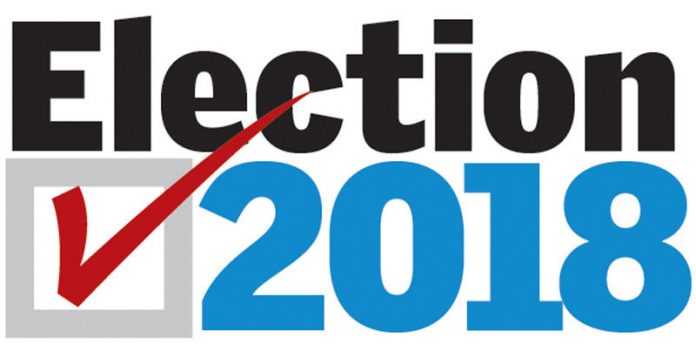With Michael Derek Roberts
This November 6, the 2018 United States mid-term elections will take place. It’s an understatement to say that the outcome of these elections will determine the trajectory of the United States for the next decade. This is a crucial set of elections that will also be a referendum on the politics and policies of the Republican AND Democratic Parties. For Republicans and President Donald Trump its about taking the country father and farther rightwards and promoting and pushing a neo-conservative agenda.
For Democrats it’s a chance to return to and institute a long overdue progressive agenda that’s people-centered, and hold a runaway administration in check and to account. We’ve put together this guide so our readers will know what’s at stake.
The Election Math and the stakes
- The U.S. House of Representatives. The political math says that Democrats need to flip 23 Republican held (or leaning) seats to win the US House of Representatives. Should this happen, and I’m cautiously predicting a win for the Democrats, that would significantly change the governing dynamics and “political balance of power” for the Trump administration.
- The U.S. Senate.For Democrats to win the U.S. Senate they have to first keep their existing seats (retention) and pick up a net of two seats. However, their path to victory is much tougher with the Senate math than their path to taking the House.
- Governors’ races.The majority of states — 36 — will either re-elect or elect new leaders. These races are enormously important for the redistricting (redrawing of district lines) that will happen after the 2020 U.S. Census. They are also crucial for voter suppression shenanigans that GOP governors are engaged in.
The Political Landscape
- S. HOUSE OF REPRESENTATOVES – Advantage Democrats. Why is there so much talk of a Democratic takeover of the House? Here’s the political math. Of the 78 House seats currently rated by pollsters as competitive, (“Competitive” means that the seat is a “toss up”, “lean” or is “likely” to change political parties,) only five are held by Democrats today. This means House Republicans are not just on defense. They are in a lopsided battle for survival, fighting uphill.
- S. SENATE. Advantage Republicans. Democrats are fighting to hold on to their Senate seats and are defending more than two-thirds of them. Another mathematical advantage for Republicans: The political math favors Republicans keeping the Senate albeit by projected tight majority margins. Moreover, ten Senate Democrats are running for re-election in states that voted in overwhelming numbers for President Trump in 2016. That’s not good for senate Democrats but Republicans are still in a very, very tough fight.
- The Kavanaugh flat lining. Initial polls saw the pendulum move every slightly towards the Republicans after now-Supreme Court Justice Brett Kavanaugh’s contentious and bellicose confirmation hearings. But that was short-lived despite the loud, chest chumping by Republicans. The flurry of rallies led by President Trump is a dead ringer for political nervousness on the Republican side. His recent injecting of himself in the Florida governor’s race was clumsy and ham-handed. Democratic Party’s strength in Florida and a few other states in the past few days have indicated the winds are blowing leftward with a significant Democratic lead in the governor’s race. Down-ballot races have also shifting democratic.
Midterms History and Political Calculus
- The President Trump Factor.Historically, U.S. Presidents and midterms do not go too well. For example, since 1906, the president’s party in power has gained seats in only three midterms – way back in 1934, in 1998 under Bill Clinton and in 2002 under George W. Bush. Remember President Barack Obama’s “shellacking?” If electoral history is our guide, usually, the president’s party loses House seats. And there’s more bad news for the Republican Party – that lose number can jump — to an average of 37 seats — when the sitting president’s approval rating at the time of the mid-terms is under 50 percent. That’s not encouraging for the Trump Administration that’s why they are pulling out ALL the stops and throwing EVERYTHING POLITICALLY at Democrats in hopes that something, anything will stick.
Is A “Blue Historic Democratic Wave Possible? Well, yes that can happen. But ONLY IF THERE IS HUGE, NO MASSIVE, DEMOCRATIC VOTER TURN OUT. In fact, this election is riding on two (2) factors. If Democrats take the U.S. House of Representatives it will be because of an energized coalition of female voters, college educated millennials, Blacks and Latinos. Good news for Democrats is the fact that a record number of women are running for down-ballot offices the most in U.S. history. I believe the number is over 200. The second factor is turn out – who gets their voters to the polls wins.
According to NBC’s race-by-race analysis the prediction is that between 30 and 40 new women will enter the House in 2019 This is way over the current record of 24, which was set back in 1992. Two races are worth mentioning here to make my point. Donald Trump’s victory in the 2016 Presidential elections and the growing #MeToo movement have inspired a historic number of women to run for office, many as first-time candidates. And they haven’t just been running – they’ve also been winning. In Massachusetts, Ayanna Presslet upset political bookmakers by beating Michael Capuano, a 10-term Democrat. She will become the first African American woman to represent Massachusetts in Congress. She was followed by the stunning win by Alexandria Ocasio-Cortez’s over Democratic incumbent Joe Crowley in New York.
And what’s most encouraging for Democrats is that the increase in female candidates is mostly Democrats. NBC also reported that of the 254 non-incumbent Democratic candidates for the House, 50% are women, compared with 18% of Republicans. What’s more interesting is the fact that the number of Republican women in the House is set to decline in the 2019 cycle.
So, could Democrats do well enough in the midterms to create an “historic Blue wave”? Let U.S. electoral history speak to us. Here are the top five wave elections numbers in the House of Representatives.
- 1932– Democrats flipped an astounding 97 House seats to win the House
- 1938– Republicans bounced back by taking over 81 seats even though they did not gain control
- 1974 – Democrats flipped 49 seats
- 1994– Republicans picked up 54 seats
- 2010 – Republicans picked up 63 seats
So on to November 6.















































 and then
and then